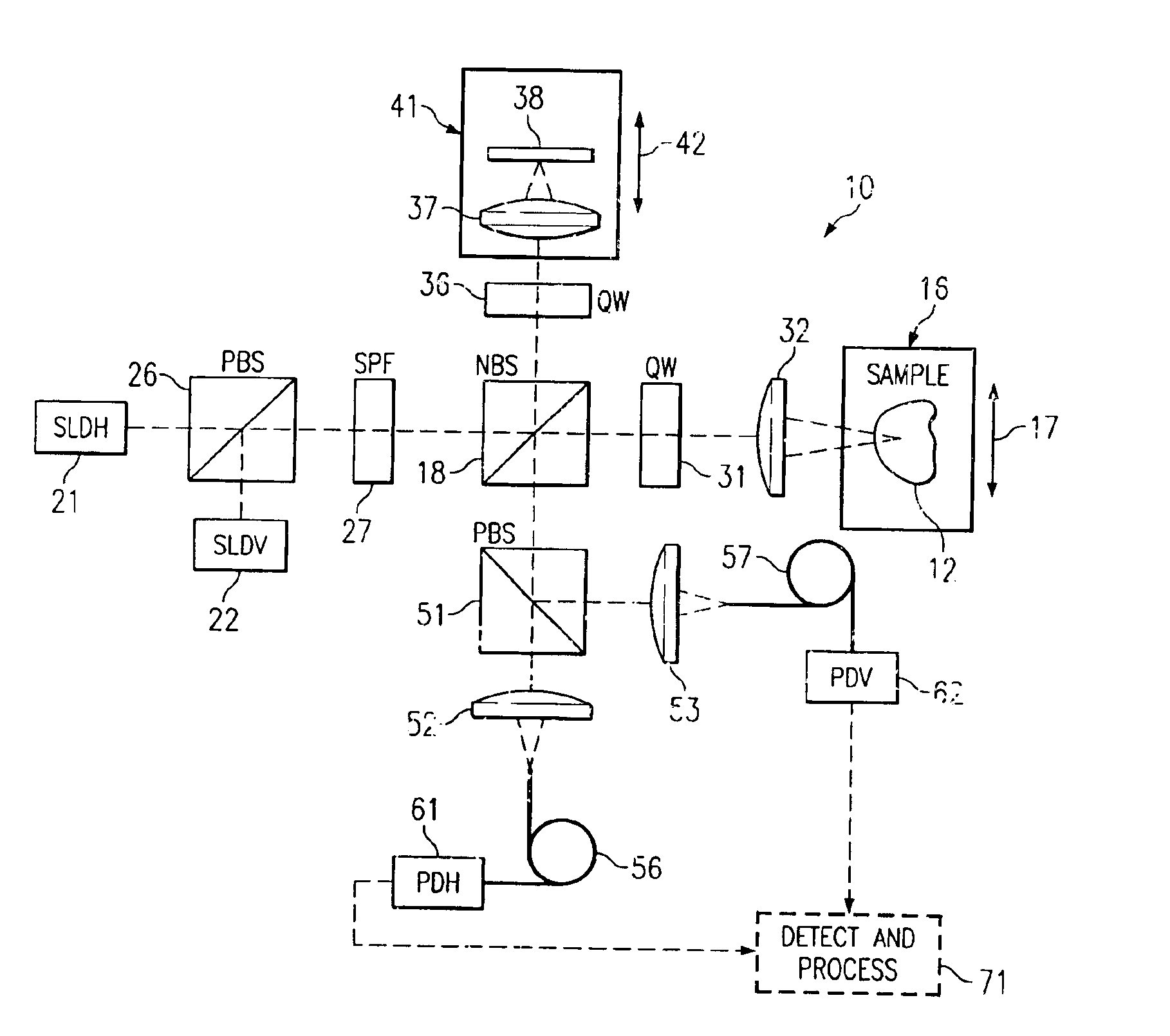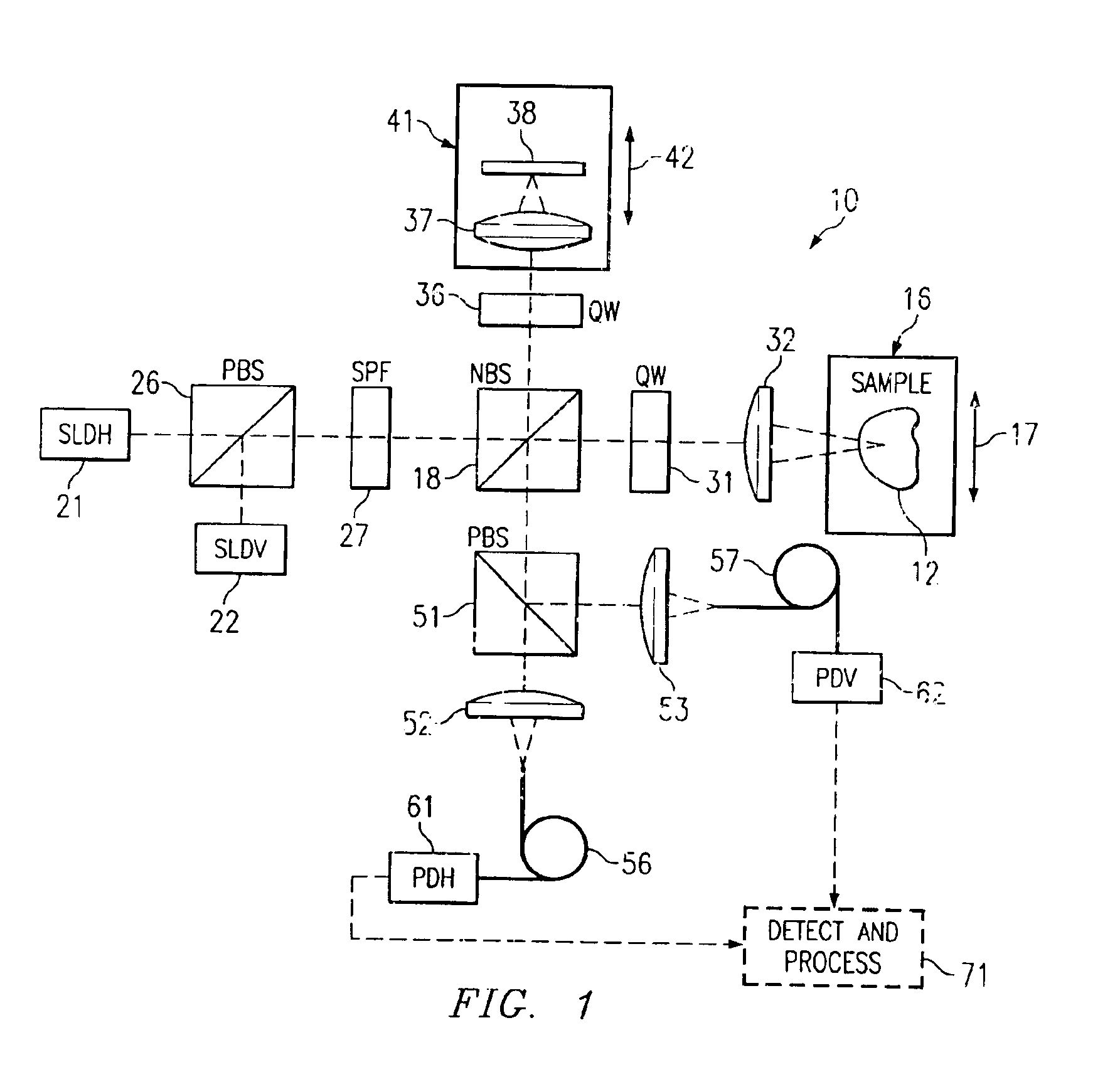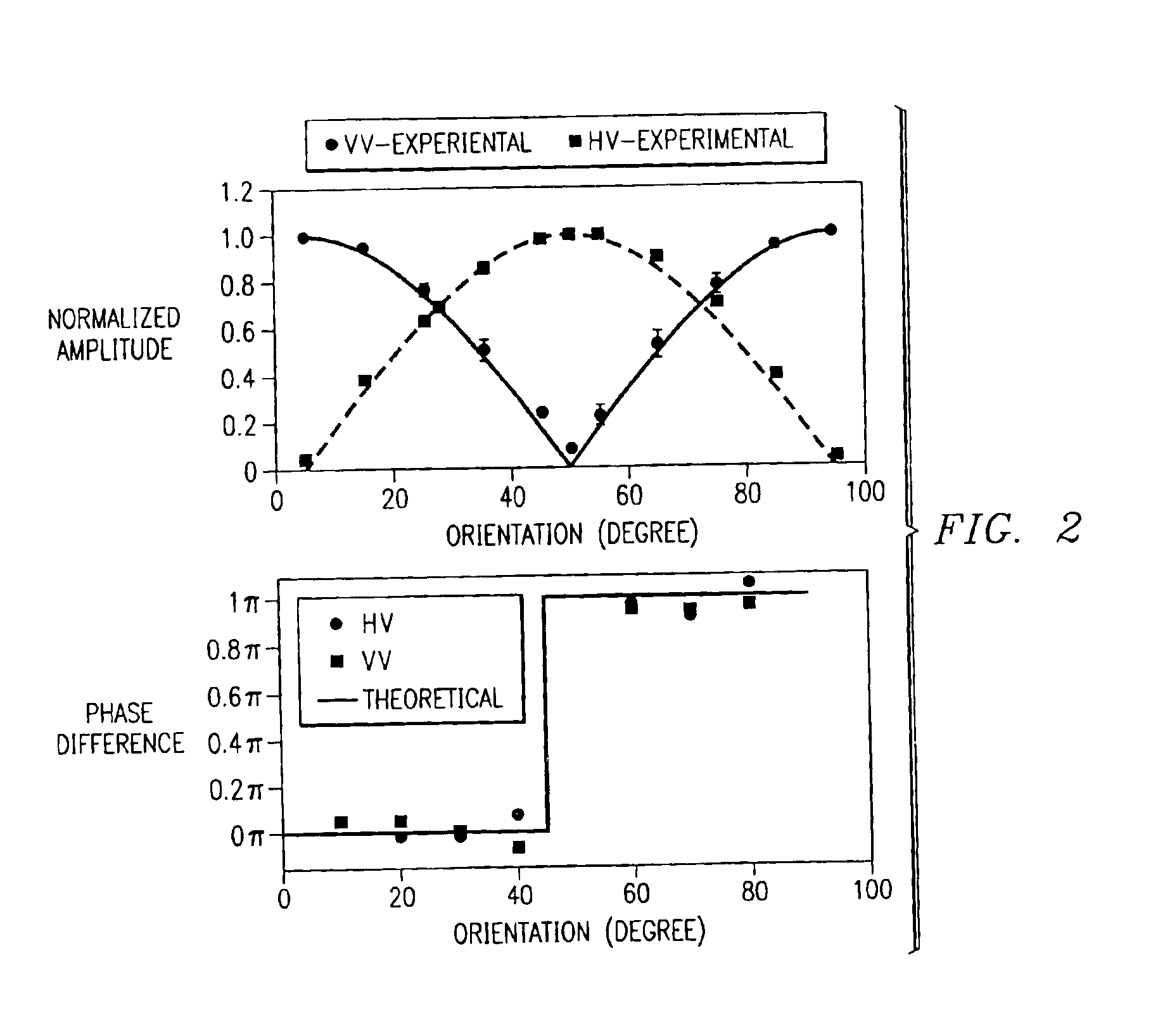Method and apparatus for obtaining information from polarization-sensitive optical coherence tomography
a technology of optical coherence tomography and information, applied in the field of radiation analysis, can solve the problems of limiting the use of existing techniques to stable samples such as bones, the relatively time-consuming nature of existing techniques, and the general inability of existing techniques to measure the mueller matrix of unstable samples
- Summary
- Abstract
- Description
- Claims
- Application Information
AI Technical Summary
Problems solved by technology
Method used
Image
Examples
Embodiment Construction
[0019]FIG. 1 is a block diagram of a polarization-sensitive optical coherence tomography (OCT) apparatus 10, which embodies aspects of the present invention. As discussed in more detail later, the apparatus 10 uses polarization-sensitive OCT to optically and non-destructively collect information about a sample 12. The sample 12 is not itself a part of the apparatus 10, and may be biological tissue, such as cartilage, collagen, or a retina. Alternatively, the sample 12 could be a non-biological material, such as a piece of a polymer material. Through the use of polarization properties as a contrast mechanism, polarization-sensitive OCT can reveal some information about biological tissue or other material that is not available with conventional OCT techniques.
[0020]The apparatus 10 includes a translation stage in the form of a table 16, which has the sample 12 supported thereon, and which is supported for reciprocal linear movement in directions indicated by a double-headed arrow 17. ...
PUM
 Login to View More
Login to View More Abstract
Description
Claims
Application Information
 Login to View More
Login to View More - R&D
- Intellectual Property
- Life Sciences
- Materials
- Tech Scout
- Unparalleled Data Quality
- Higher Quality Content
- 60% Fewer Hallucinations
Browse by: Latest US Patents, China's latest patents, Technical Efficacy Thesaurus, Application Domain, Technology Topic, Popular Technical Reports.
© 2025 PatSnap. All rights reserved.Legal|Privacy policy|Modern Slavery Act Transparency Statement|Sitemap|About US| Contact US: help@patsnap.com



